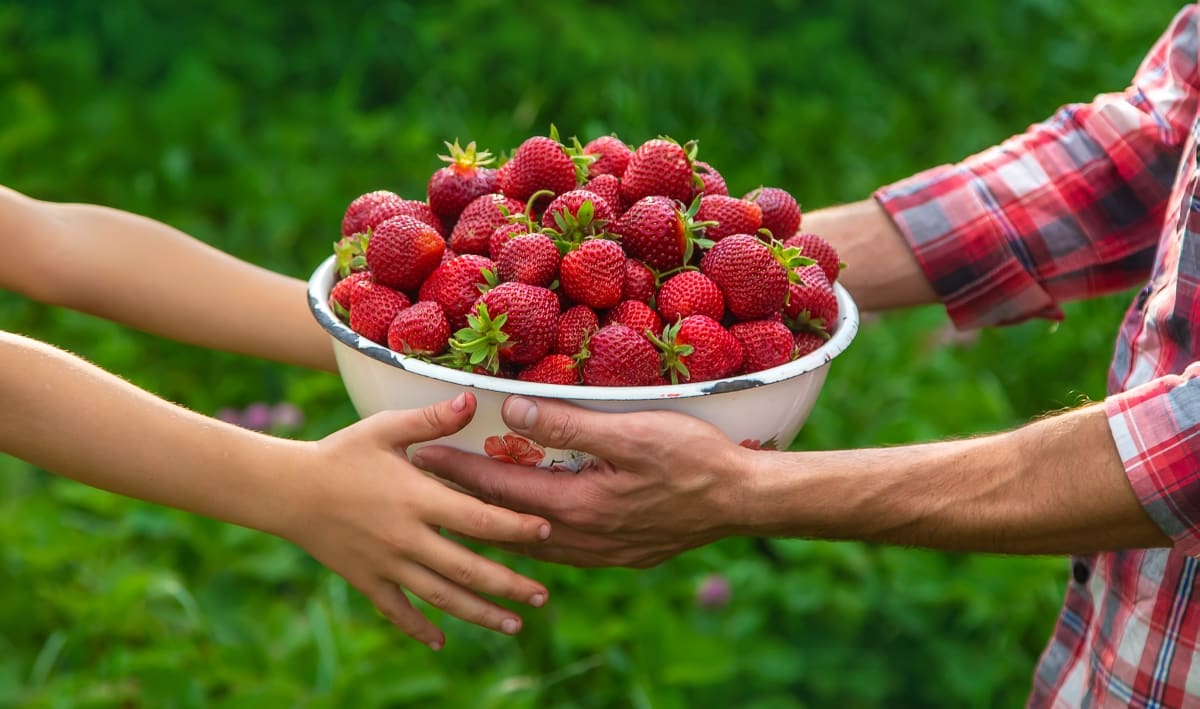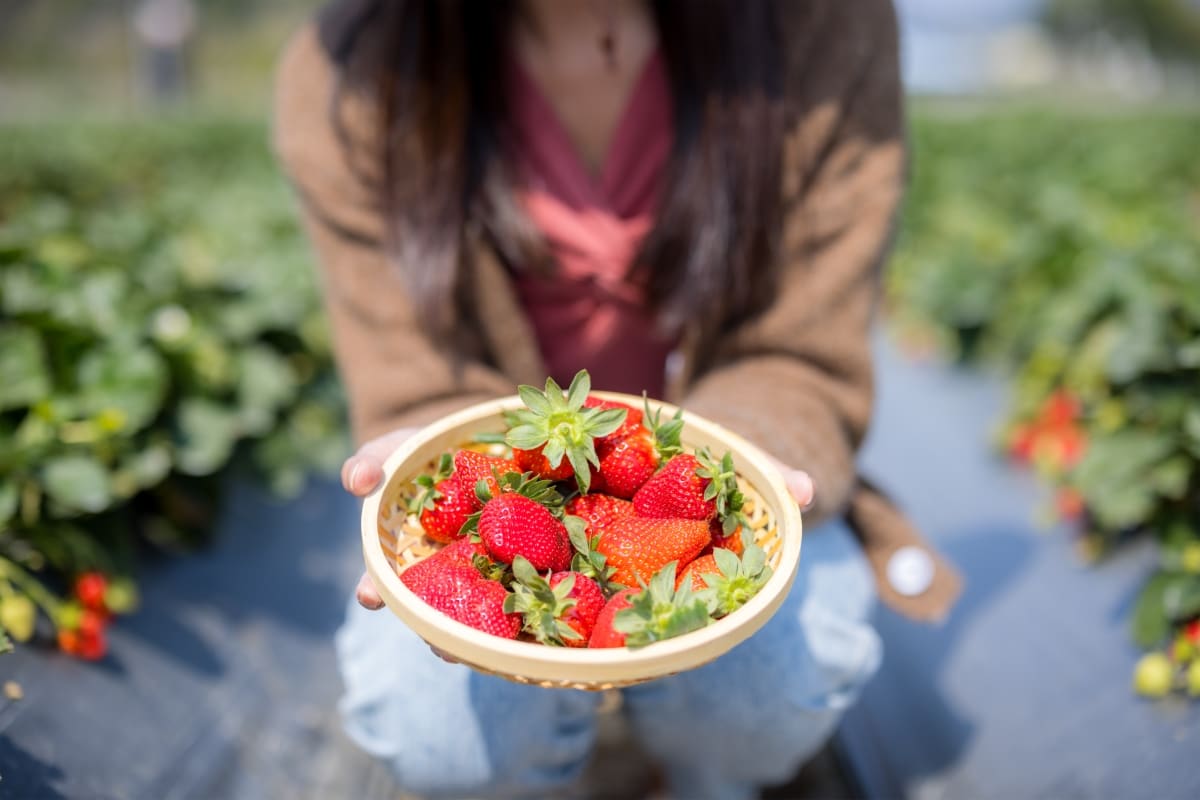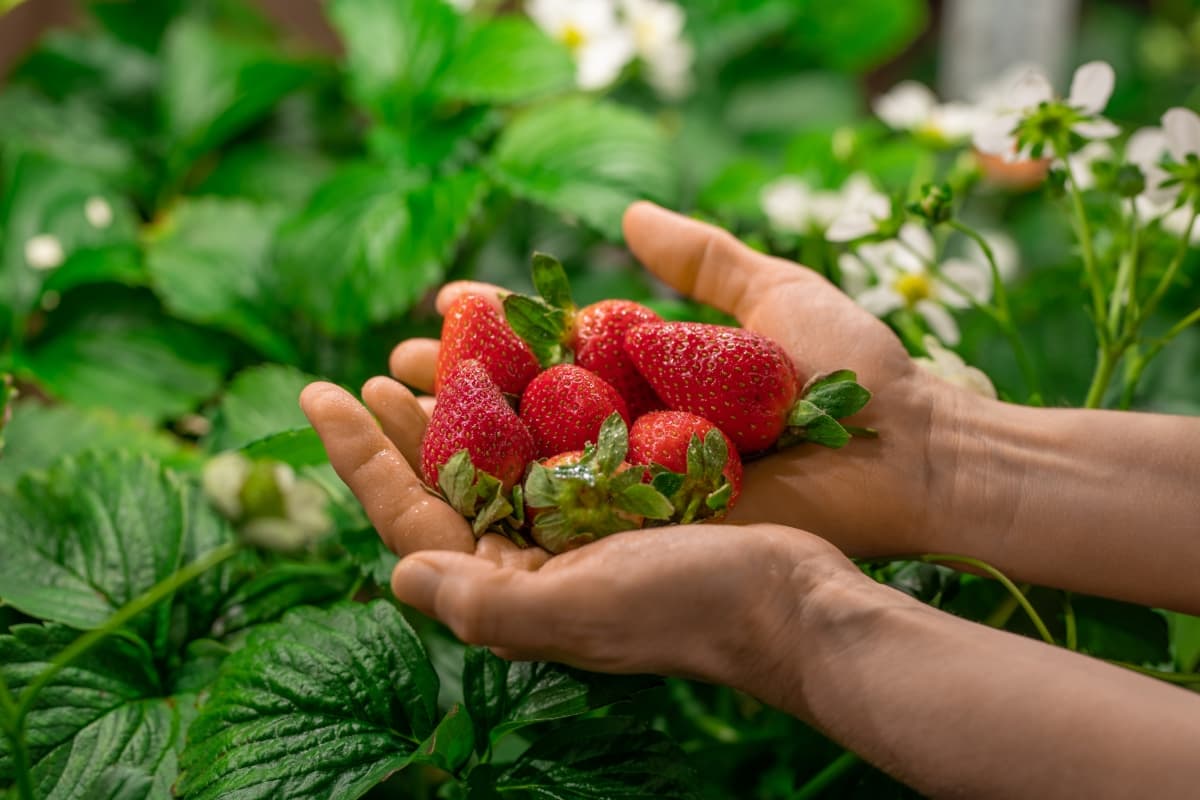When it comes to growing strawberries, one of the key factors that determines their quality is their size. Larger strawberries not only look more appealing but also tend to have a better taste and texture. That’s why many Strawberry growers are interested in finding ways to increase fruit size in their orchards.

Remember to implement these practices consistently throughout the growing season and tailor them according to specific cultivars or environmental conditions unique to your orchard. Observation, experimentation, and an attentive approach will ultimately lead you toward achieving bigger and better strawberries.
How to Increase Strawberry Fruit Size
Optimizing Soil Nutrients for Larger Strawberry Fruits
To achieve larger Strawberry fruits in your orchard, one of the key aspects to focus on is optimizing soil nutrients. Providing your plants with the right balance of essential elements will promote healthy growth and maximize fruit size. Nitrogen is an important nutrient for promoting vegetative growth, but too much can result in excessive foliage at the expense of fruit development.
Phosphorus encourages root development and flower formation, while potassium improves overall plant health and helps enhance fruit quality. In addition to these macronutrients, micronutrients like iron, manganese, zinc, and boron are also crucial for optimal Strawberry growth. These trace elements play vital roles in various physiological processes within the plant. Consider using organic fertilizers or compost to improve soil fertility naturally.
Maximizing Sunlight Exposure for Bigger and Better Strawberry Fruits
When it comes to growing bigger and better Strawberry fruits, maximizing sunlight exposure is a crucial factor. It’s important to choose the right location for your Strawberry patch. Look for an area that receives full sun throughout the day. This means at least 6-8 hours of direct sunlight. Avoid planting them in shady spots or areas with too much shade from surrounding trees or buildings.
Next, consider the layout and spacing of your Strawberry plants. Ensure that they are not overcrowded, which can lead to shading and competition for light. Give each plant enough space so that their leaves have room to spread out and capture maximum sunlight. Regular pruning is also key to maximizing sunlight exposure for your strawberries.
The Role of Pruning in Increasing Strawberry Fruit Size
Pruning plays a crucial role in increasing the size of Strawberry fruits. One important aspect of pruning is removing runners’ plants that emerge from the main Strawberry plant. While these runners are essential for propagating new plants, allowing too many to grow can divert resources away from fruit development. By cutting back excess runners, you ensure that the plant’s energy is focused on producing bigger fruits. Another pruning technique is thinning out overcrowded foliage.
In case you missed it: Top 15 Strawberry Varieties to Grow in Your Garden: Best List of Strawberry Varieties for High Profits

Strawberry plants need ample airflow and sunlight to thrive, so it’s important to remove dense clusters of leaves that may block light from reaching the lower parts of the plant. This not only improves overall growth but also encourages larger fruit development. Additionally, pruning dead or diseased leaves helps prevent diseases and ensures that nutrients are directed toward healthy parts of the plant. Regularly inspecting your Strawberry plants and promptly removing any damaged or infected foliage will contribute to better fruit size and quality.
Irrigation Techniques for Larger Strawberry Fruits
Adequate water supply is essential for nutrient absorption, cell expansion, and overall plant growth. To ensure your Strawberry plants receive the right amount of water, consider implementing these irrigation techniques. It’s important to provide consistent moisture throughout the growing season. Strawberries require regular watering, especially during hot and dry periods.
Drip irrigation systems are highly effective for strawberries as they deliver water directly to the roots while minimizing evaporation and reducing weed growth. Installing drip lines or using soaker hoses ensures efficient water distribution without wetting the foliage excessively. Mulching around Strawberry plants helps retain soil moisture by preventing evaporation. Organic materials make excellent mulch options as they also suppress weeds and regulate soil temperature.
Fertilizer Application for Bigger Strawberry Fruits
Proper fertilizer application is essential for promoting the growth of bigger and better Strawberry fruits in your orchard. By providing the right nutrients at the right time, you can ensure that your plants have all they need to produce large, juicy berries. When it comes to fertilizing strawberries, timing is key. Start by applying a balanced fertilizer before planting to provide a good foundation for growth. Once the plants are established, apply nitrogen-rich fertilizer during the growing season.
It’s important to remember that too much fertilizer can be detrimental to fruit size and quality. Avoid over-fertilization by carefully following recommended application rates and monitoring soil nutrient levels regularly. In addition to nitrogen, strawberries also require phosphorus and potassium for optimal growth. Incorporate these nutrients into your fertilization plan by using a complete fertilizer or supplementing with specific products designed for strawberries.
Strawberry Fruit Thinning: When, How, and Why to Thin Fruits for Optimal Growth
When it comes to growing strawberries, one important aspect that often gets overlooked is fruit thinning. Ideally, this process should begin once the fruits reach about 1/2 inch in diameter. At this stage, you can easily identify which fruits are smaller and less developed compared to others. Thinning can be done by simply pinching off or snipping away the excess fruits from each cluster.
It’s essential to leave enough space between each fruit for proper air circulation and sunlight penetration. This will ensure that each remaining fruit receives an adequate amount of nutrients and energy for its growth. Thinning out your Strawberry fruits allows the plant to focus its resources on fewer but larger berries. This means more nutrients are available per fruit, resulting in bigger and juicier strawberries.
Monitoring and Controlling Pests and Diseases for Larger Strawberry Fruits
To achieve larger Strawberry fruits in your orchard, it is important to monitor and control pests and diseases effectively. These visitors can damage your plants, stunting their growth and reducing fruit size. Regular monitoring is key to ensuring optimal conditions for your strawberries. Start by inspecting your plants regularly for any signs of pests or diseases. Look out for common culprits such as aphids, spider mites, powdery mildew, and fungal infections.
In case you missed it: Hydroponic Strawberry Gardening Techniques, Tips

There are various methods you can employ to control pests and diseases in a natural and eco-friendly manner. One approach is using biological controls like ladybugs or beneficial nematodes that feed on harmful insects. You can also try companion planting with herbs such as basil or marigolds that repel pests naturally. Another important aspect of pest control is maintaining good garden hygiene. Remove any dead leaves or plant debris promptly, as they can harbor pests and disease-causing pathogens.
Harvesting Strawberry Fruits at the Right Time: The Importance of Timing for Maximizing Fruit Size and Quality
Harvesting Strawberry fruits at the right time is crucial for maximizing their size and quality. Timing plays a significant role in ensuring that you get the most out of your Strawberry plants, both in terms of yield and flavor. The first indicator that strawberries are ready to be harvested is their color. Ripe strawberries will have a vibrant red hue all over, with no trace of green or white remaining. They should also feel firm but not too hard when gently squeezed.
To determine if your strawberries are truly ripe, it’s important to taste-test them. The fruit should be sweet and juicy, with a burst of flavor. If the berries lack sweetness or are sour, they may need more time on the plant to fully ripen. Another key factor to consider when harvesting strawberries is weather conditions. Ideally, pick your berries early in the morning when temperatures are cooler.
Temperature Management for Bigger Strawberry Fruits
Temperature plays a key role in the growth and development of Strawberry fruits. To ensure bigger fruit size, it is important to manage temperature effectively in your orchard. During the flowering stage, maintaining cooler temperatures can benefit fruit set and increase the chances of bigger fruits. Cooler temperatures encourage proper pollination by extending the pollen viability period.
This allows for more efficient fertilization and ultimately leads to larger strawberries. On the other hand, warmer temperatures during berry development promote faster ripening but may result in smaller fruit size. It is essential to strike a balance between temperature and ripening time to maximize fruit size. To manage temperature effectively, consider using shade cloth or row covers during hot periods to protect plants from excessive heat.
Additionally, strategic positioning of your Strawberry plants can help take advantage of natural shade provided by nearby trees or structures. Proper ventilation within your orchard is also crucial for temperature management. Good airflow helps regulate heat buildup and prevents stagnant air pockets, which can lead to higher temperatures that negatively impact fruit growth.
Strawberry Tree Maintenance and Training for Increased Fruit Size
Proper maintenance and training techniques can play a significant role in ensuring larger fruit size in your Strawberry trees. First, it is important to prune your Strawberry tree regularly. Pruning removes dead or diseased branches, allowing more sunlight and air circulation, which can ultimately contribute to bigger fruit size. Additionally, thinning out the excess branches will direct energy towards fewer fruits, resulting in larger ones. Another key aspect of maintaining healthy Strawberry trees is regular watering.
In case you missed it: Best Fertilizers for Strawberries: Homemade, Organic, Compost, Liquid, NPK Ratio, and Schedule

Adequate irrigation ensures that the plants receive the necessary nutrients they need for optimal growth. It is essential to water deeply rather than frequently so that the roots have access to moisture deeper in the soil. Fertilizer application also plays a crucial role in maximizing fruit size. Using a balanced fertilizer high in potassium can promote healthier root development and enhance overall plant vigor. Regularly checking leaves for signs of infestation or diseases such as powdery mildew is vital for early intervention.
Conclusion
By implementing these fruit size management techniques in your Strawberry orchard, you can significantly increase the size and quality of your Strawberry fruits. Optimizing soil nutrients, maximizing sunlight exposure, pruning effectively, applying irrigation techniques and fertilizers strategically, thinning fruits when necessary, monitoring pests and diseases diligently, harvesting at the right time, managing temperature appropriately, and maintaining proper tree training can all contribute to bigger and better Strawberry fruits.
- How to Grow Tomatoes Organically at Home: A Comprehensive Guide
- Organic Gardening on a Budget: Low-Cost Methods and Materials
- Gongura Seed Germination and Planting Methods
- Cabbage Seed Germination and Selection
- Broccoli Seed Germination and Selection
- Asparagus Seed Germination and Variety Selection
- Seasonal Flower Gardening: Best Practices for Spring, Summer, Fall, and Winter
- How to Grow Hibiscus from Flower
- Plantation Ideas for Home Decoration: A Beginners Guide